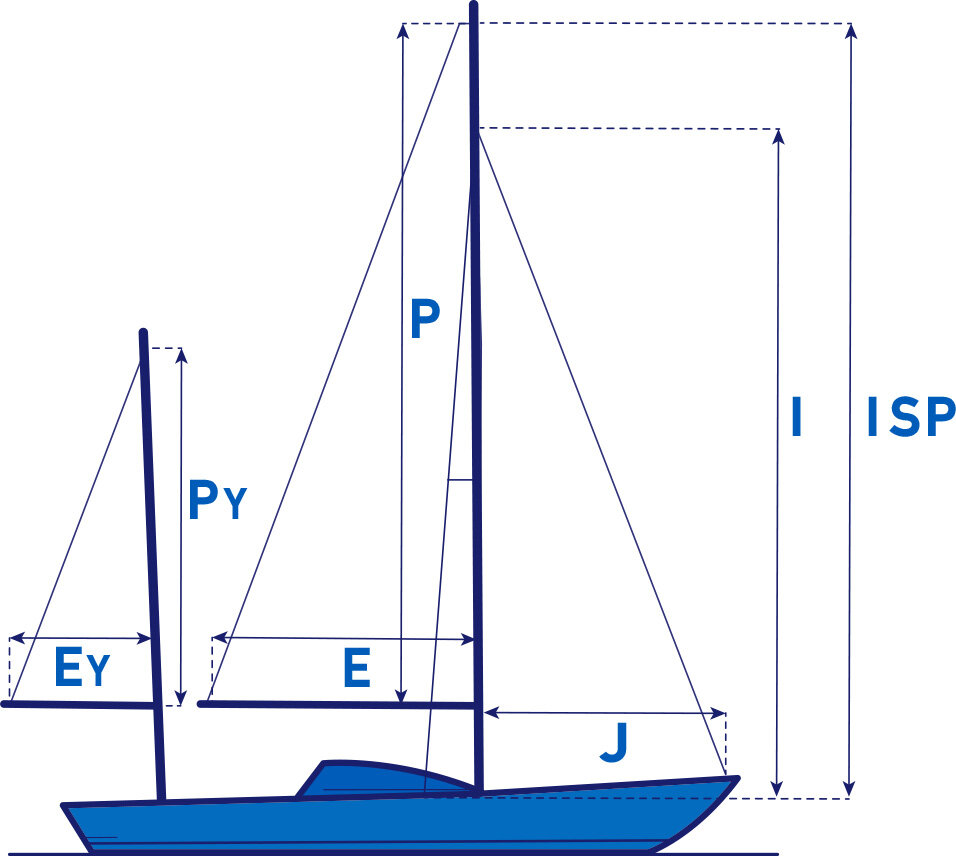How to Measure Your Sails | South East Asia Sails (SEA Sailmakers)
Accurate measurements are crucial for ensuring that your new sails fit perfectly and perform optimally. At South East Asia Sails (SEA Sailmakers), we provide detailed instructions to help you measure your sails accurately. Follow this guide to measure your mainsails, headsails, furling sails, and downwind sails with confidence.
Mainsails
Measuring Your Mainsails
Luff – “P” Dimension:
Attach a tape measure to the main halyard, ideally along with the head of the old mainsail.
Hoist the tape measure under normal luff tension. If the old sail isn’t available, hoist to the maximum desired height (better a little short than too long).
Measure to the top of the boom, not the tack pin on the boom. If your mast has bands, measure to the band.
Leech:
While the tape measure is still hoisted, swing it back to the aft end of the boom.
Measure in a straight line to where you want the clew ring to be located.
Foot – “E” Dimension:
Lower the tape and attach it to the outhaul line along with the clew of your old mainsail if available.
Pull the outhaul to the maximum point of draw.
Measure from there to the aft face of the mast, not to the tack fitting on the boom. If no old mainsail is available, pull it to where you want the clew to stop. If there’s a band on the boom, measure to it.
Luff & Foot Hardware:
Note the shape and size of the slides, slugs, or bolt rope and how they attach to the mast. Flat internal and external slides are measured in width, while cylindrical slugs and bolt rope are measured in diameter.
Tack Pin Setback:
Measure the location of the Tack Pin on your boom’s gooseneck in inches behind the mast and above the boom.
This measurement ensures the tack ring on your mainsail is correctly positioned to avoid puckering.
Headsails
Measuring Your Headsails
Max. Luff – Max Hoist:
Hook a long tape measure to the jib halyard (or top furling swivel if using a furler).
Hoist it all the way until it stops at the top.
Measure down to the point you intend to attach the sail tack to, allowing a few centimeters for stretch or error.
“J” Dimension:
Measure the horizontal distance between the tack fitting and the mast. This is the “J” dimension, used to compare the “L/P” for percent overlap.
Sheet Lead Angle:
Ensure the clew height for the jib or genoa allows sheeting to the existing genoa track. You might need additional tracks if necessary.
Extend an imaginary line from mid-luff through the clew to the deck. When sheeted flat, you should achieve even tension both down the leech and back on the foot. Otherwise, the sail might be “strapped” (tight on one side and loose on the other).
Measuring Furling Sails
Furling Unit:
Hook the tape measure to the upper furling swivel as if it were the head of the sail.
Hoist the tape all the way up and measure down to the tack fitting on the furling drum.
Determine the diameter of the luff tape needed. This can be measured on an old sail with calipers or a fine scale ruler. Luff tape size is provided with furling unit documentation, with the most common size being #6 (slightly over 3/16”).
Downwind Sails
Measuring Downwind Sails
Spinnaker Measurements for Racing:
The spinnaker’s luff should equal the “I” dimension.
The maximum foot/girth should not exceed 1.8 times the “J” dimension.
Spinnaker Measurements for Cruising:
The luff can be plus or minus 8% of the “I” dimension but cannot exceed the maximum hoist on the halyard.
The spinnaker foot should fall between 1.6 and 1.8 times the “J” dimension.
Additional Tips
Always double-check your measurements for accuracy.
Use a quality tape measure to ensure precise measurements.
If possible, measure twice to confirm consistency.ximum hoist on the halyard. Spinnaker foot should fall between 1.6 and 1.8 X “J”


